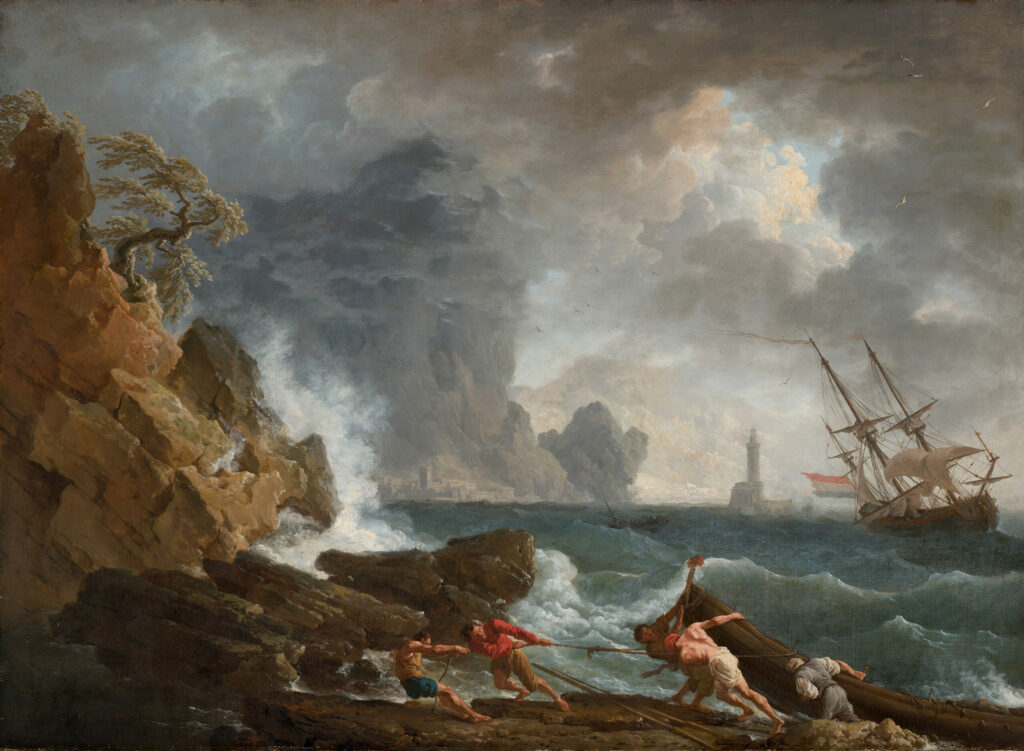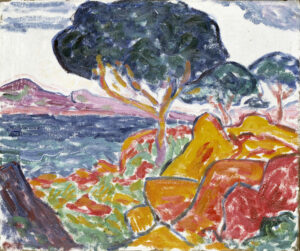
Through this “Italian Port in Stormy Weather” (circa 1740-1750), Claude-Joseph Vernet expresses his mastery of dramatic marine art.
This work demonstrates the painter’s fascination with atmospheric phenomena and their impact on human activity. The composition reveals a keen sense of theatricality: in the foreground, sailors desperately struggle against the unleashed elements, pulling a boat toward the safety of the rocky coast. The striking contrast between human fragility and the power of the storm constitutes the dramatic force of the work. Vernet deploys his characteristic chromatic palette here, contrasting the golden ochres of the cliffs with the deep greens of the turbulent sea, while the leaden sky amplifies the pathetic effect. In the distance, a ship battered by the elements and the silhouettes of a Mediterranean port anchor the scene in that mythical Italy that nourished the painter’s imagination. This canvas, from prestigious collections, attests to the artist’s renown.
Further information
- Claude-Joseph Vernet, An Italian Port in Stormy Weather, circa 1740-1750
- 101 × 138 cm
- Mauritshuis, The Hague, displayed in the Prince William V Gallery
- https://www.mauritshuis.nl/fr/decouvrir-la-collection/oeuvres-d-art/292-an-italian-harbour-in-stormy-weather
Claude-Joseph Vernet (1714-1789) remains one of the undisputed masters of eighteenth-century French landscape painting. Born in Avignon, he spent twenty years in Italy where he forged his personal style. Influenced by seventeenth-century landscape painters, Vernet developed an aesthetic of natural sublimity that captivated the European aristocracy. His Italianate seascapes, blending topographical realism with poetic idealization, earned him international renown. Upon his return to France in 1753, he undertook the series “Ports of France” commissioned by Louis XV, a monument of French maritime painting. A member of the Royal Academy, father of painter Carle Vernet and grandfather of Horace Vernet, he founded an artistic dynasty. His work influenced European painting, paving the way for the advent of Romanticism.






